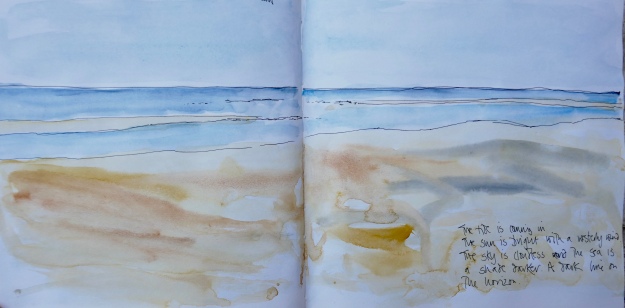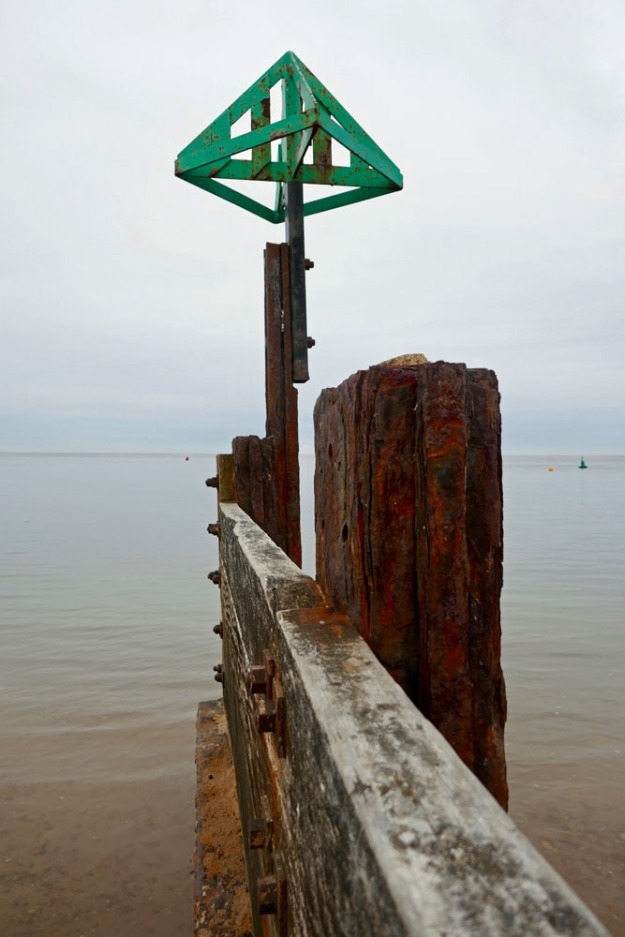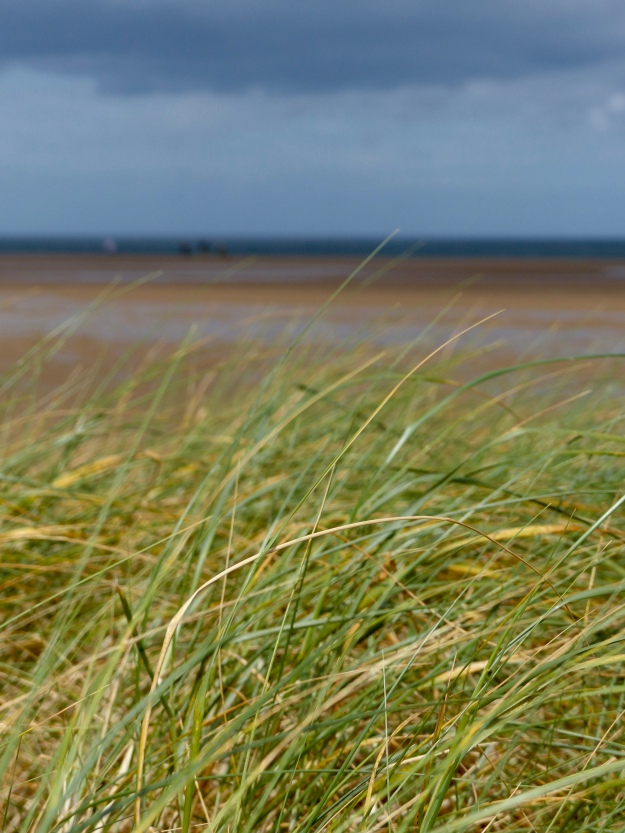What a difference a couple of weeks can make! Two weeks ago I was in the far west of Cornwall. After a fantastic first day everything rather went down hill. Firstly, I got a cold (the first for 2 years), and secondly the weather deteriorated into rain (heavy at times) and gales. It made for exciting conditions, standing on the top of cliffs, looking down at huge, rolling waves and being battered by force 8 winds. The conditions meant that I didn’t manage to do as much drawing as I had hoped, however, the rain did stop occasionally, the sun did make an appearance (rarely), I did manage a few walks and some sketching was done.

Looking to Pendeen watch from east of Porthmeor Beach. Grey Granite. Green grass. Grey/blue sea. Grey/blue sky is lighter than the sea which has a softly edged dark stripe along the horizon.
The landscape in Cornwall is vibrant. The colours are strong and the lines and forms of the land and water are dynamic. All around there is constant activity and movement. When I was there the noise of the wind and the waves was tremendous; it filled the ears and was a real presence. I draw fast, moving pencil, pen and paint over the paper at speed: look, scribble, look, scribble. It is an energetic response to a vigorous landscape.

Looking down on a boiling sea and rock stack at Porthmeor Beach. Jade green/blue sea. White/jade waves froth around the rocks.

Rocks at Kynance Cove.

Cliffs at Kynance Cove.

Deep black gully looking back from Gurnard’s head.
Back here in Wells on the far east side of the country the contrast couldn’t have been more different this weekend as there were clear, bright days with hot sunshine. Sitting at the beachhut early in the morning, I watched the beach gradually fill with people coming to enjoy the summer sunshine. The long horizontal lines of the landscape languidly mingle and intertwine and although the light is brilliant there is still a subtle blue/grey cast to its colour. Everything appears calm. Even the incoming tide, that creeps slowly over the sand, filling gullies and submerging exposed sandbanks, moves so slowly it is almost indiscernible. There is movement and change but, at the moment, it is a much quieter energy than that of the Cornish landscape. I draw a line, look and then draw another line. I smooth and gently wash the paint across the paper, filling the brush with colour and letting it drip and mingle as it will. It is a considered response to a contemplative landscape.

The tide is coming in. The sun is bright with a westerly wind. The sky is cloudless and the sea is a shade darker. A dark line on the horizon.

British Sharpie Championship lining up for the star of the race. The sound of the hooter carries (loudly) over the water.

Bunched up before the race.

A beautiful brown sail boat (runs) sails past the gap in the dunes.
Thankfully the cold has gone!























































